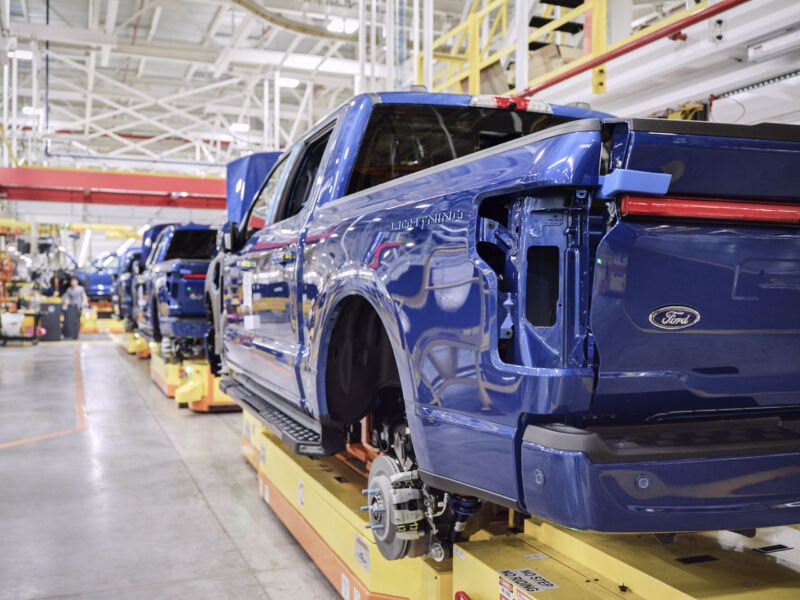Ford is profitable, but the EV division should be seen as a startup, it says.
There's no doubt that Ford is embracing electrification. It was first to market with an electric pickup truck for the US market, and a darn good one at that. It has a solid midsize electric crossover that's becoming more and more common on the road, even if it does still upset the occasional Mustangophile. And there's an electric Transit van for the trades. But its electric vehicle division will lose $3 billion this year as it continues to build new factories and buy raw materials.
The news came in a peek into Ford's financials released this morning. As we reported last year, Ford has split its passenger vehicle operations into two divisions. Electric vehicles fall under Ford Model e, with internal combustion engine-powered Fords (including hybrids and plug-in hybrids) falling under Ford Blue. The move was in large part to placate investors and analysts, no doubt starry-eyed during a time when any EV-related stock was booming.
"We've essentially 'refounded' Ford, with business segments that provide new degrees of strategic clarity, insight, and accountability to the Ford+ plan for growth and value," said Ford CFO John Lawler. "It's not only about changing how we report financial results; we're transforming how we think, make decisions and run the company, and allocate capital for highest returns."
Ford Model e should be treated as a startup, Lawler explained. "As everyone knows, EV startups lose money while they invest in capability, develop knowledge, build (sales) volume, and gain (market) share," he said. It took Tesla until 2021 to have a profitable year.
Indeed, Model e has lost money: $900 million in 2021, $2.1 billion in 2022, and an expected $3 billion in 2023. And it's easy to see why: It is doubling the production rate of the Mustang Mach-E to 210,000 a year, and tripling the number of F-150 Lightnings it will build to 150,000. On top of that, it is building a battery development center in Michigan and battery factories in Kentucky, Tennessee, and Michigan and has secured mineral contracts for 600,000 EVs a year.
But the other two divisions—Ford Blue and Ford Pro (which makes commercial vehicles and services)—are expected to bring in more than enough cash, with an expected pre-tax profit of between $9–11 billion, with a free cash flow of $6 billion. So there's little chance Ford will scale back its EV ambitions rather than absorb Model e's losses for the time being.
Ford says that it expects Model e should achieve an 8 percent profit margin before interest or taxes by the end of 2026 and that overall, Ford will have a 10 percent EBIT margin by then.
- Karlston
-

 1
1




Recommended Comments
There are no comments to display.
Join the conversation
You can post now and register later. If you have an account, sign in now to post with your account.
Note: Your post will require moderator approval before it will be visible.